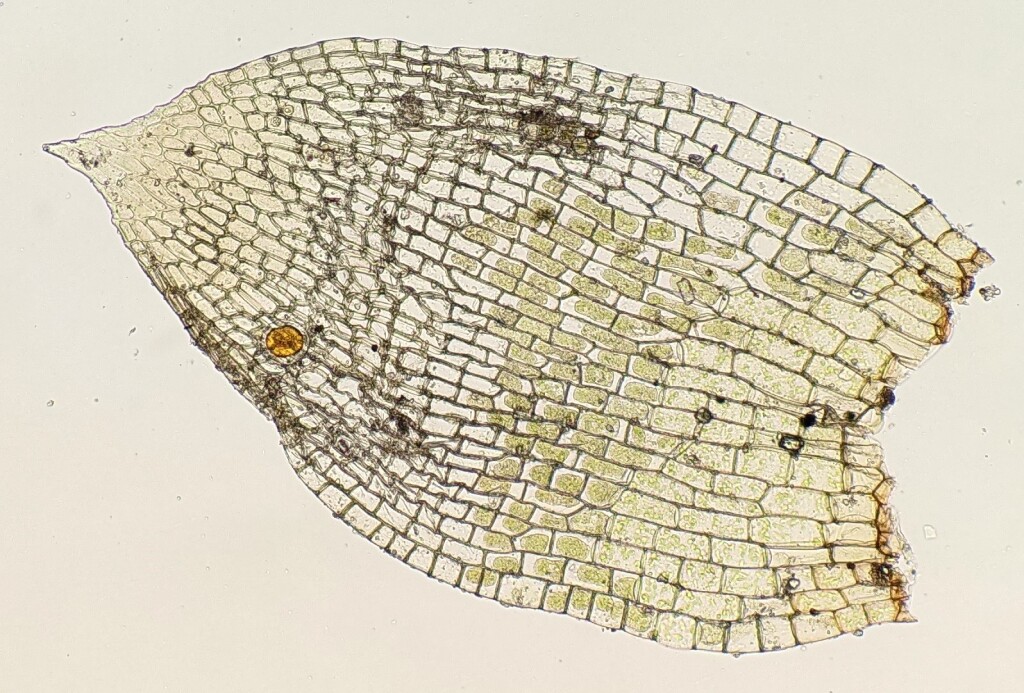Goniomitrium acuminatum subsp. enerve
(Hook.f. & Wilson) Fife & SeppeltAsexual reproduction rarely by rhizoidal tubers. Dense clusters on soil. Stems simple or rarely forked, to c. 2 mm long, pale or reddish-brown. Leaves obovate, spathulate or ovate, (1–) 1.5–2.5 mm long, 0.3–0.8 mm wide, concave adaxially, erect-spreading when moist, moderately contorted when dry; costa usually absent, sometimes with a vestigial costa at base and discontinuously in the mid and apical parts of the leaf 1 or 2 cells wide and 2 or 3 cells long; apex broadly obtuse, often apiculate; laminal cells in apical half isodiametric, hexagonal to oblong, 20–100 μm long, 15–25 μm wide; laminal cells near base larger, oblong, 50–95 μm long, 27–32 μm wide. Seta 0.2–1 mm long, pale yellow. Capsule immersed or shortly-exserted, broadly ellipsoid to globose, c. 1 mm long, c. 0.8 mm wide. Operculum c. 0.35 mm wide. Spores (70–) 80–90 (–110) μm diameter.
LoM, MuM, Wim, VVP, VRiv, MSB, MuF, Gold, EGU. Mostly on exposed soils of the north-west but with scattered occurrences elsewhere in the state. Also widespread throughout drier regions of mainland Australia south of the Tropic of Capricorn.
An important constituent of soil crusts in drier areas. Easily recognised among mosses of Victoria soil crusts by its large and often persistent pleated calyptra.
 Spinning
Spinning

